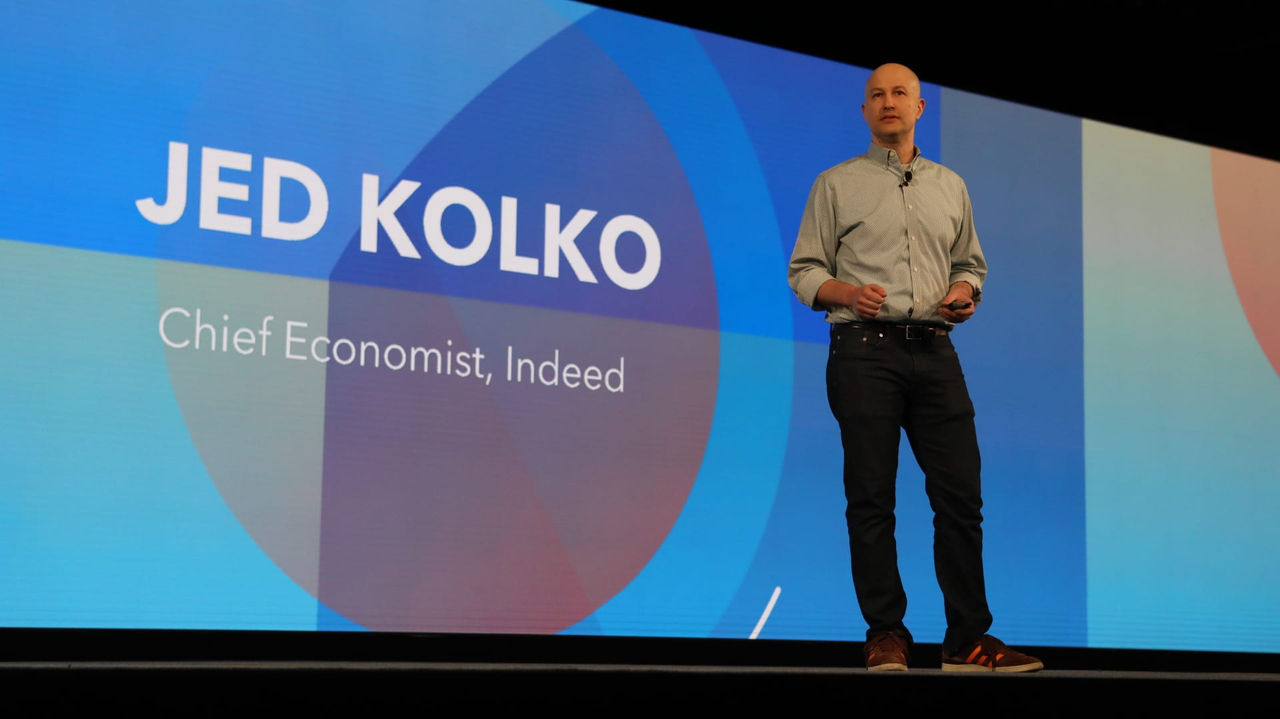With unemployment under 4 percent and more available jobs than at any time since 2000, it's time for employers to pay new hires more money, said Jed Kolko, chief economist for job search engine Indeed.
Speaking to attendees at Indeed Interactive 2018, a conference for recruiting professionals held recently in Austin, Texas, Kolko surmised that candidates having more power in the salary bargaining process will become a new normal.
"We're already seeing some wage growth, though not as much as many people expected," he said. "Paying people more needs to be a starting point."
In addition to increasing compensation offers, he advised employers to broaden their search parameters, train imperfect new hires and invest in automation to do more with the same number or fewer workers.
Searching more broadly means a lot of different things, he said. "For instance, according to Indeed data, more people are searching for jobs [that don't require] background checks. If you are insisting on a background check or a certain level of education, or a certain skill, those are things you may need to ease up on a bit."
Opening up search also means looking at people from different areas of the country, particularly where the unemployment rate is not as low and the labor market not as tight.
Another strategy for hiring from a thin labor pool is to look for candidates that fit a certain number—but maybe not all—of the boxes you had hoped to check and then skill them up to the level of the requirements you had hoped for, he said.
It could be that organizations will have to rearrange their workforce composition or even do without certain roles. In these cases, Kolko recommended investing in automation technology to improve organizational productivity.
[SHRM members-only online discussion platform: SHRM Connect]
How Tight Is the Labor Market?
Kolko explained that the U.S. labor market is unusually stretched, but there are a couple of caveats. The unemployment rate is 3.9 percent, the lowest level in 17 years.
Another measure that shows how many people are looking for jobs compared to how many jobs are available reveals that there is a job opportunity for just about everyone. There is presently about one open job per unemployed, again the lowest level for this metric in 17 years. During the 2007-09 recession it was more than six unemployed workers per open job.
But these numbers don't tell the whole story, Kolko continued.
"First, the unemployment rate isn't 3.9 percent everywhere," he said. "The labor market is tighter in some parts of the country than others." He noted that states in New England and parts of the Midwest have unemployment rates less than 3 percent, while states like Alaska, New Mexico and West Virginia have unemployment rates over 5 percent. "There's still a lot of unevenness across the country when it comes to how tight the labor market is, not only based on geography but also on the kinds of workers needed," he said. "The unemployment rate is extremely low for people with a college degree—2.1 percent, which explains why it's especially hard to find skilled candidates in lots of fields."
He added that the unemployment rate on its own is somewhat misleading. "That's because the way the unemployment rate is measured is focusing on people actively looking for work. Many people have dropped out of the labor force entirely and are no longer looking for work, but are increasingly being coaxed back in."
About 21 percent of prime-working-age adults (25-54) in the U.S. are currently not working, Kolko said. "That's come down from 25 percent during the recession, but it's not at its lowest level in 17 years, like the unemployment rate."
What to Expect
Kolko stressed that the labor market is cyclical, but underneath those anticipated swings there are a few long-term trends to keep an eye on:
The aging population. In 2016, people 65 and older were 5.8 percent of the labor force. The Bureau of Labor Statistics projects that this same cohort will become 8.6 percent of the labor force by 2026. "This means that more and more job seekers and candidates will be 65-plus," Kolko said.
Immigration policy. The future rate of immigration to the U.S. is an unknown factor, because of policy changes currently being considered in the United States, which aim to reduce immigration levels. Recent immigrants are more likely to have college degrees than native-born Americans (48 percent vs 31 percent over the past five years) and bring many of the needed skills employers need, he said.
Automation. Technology may significantly change how many people employers will need to hire in the future. "Automation is likely to create some jobs and destroy others," he said. "It's a raging debate right now and predictions are all over the map about whether there will be more jobs or fewer in the future. But historically, it's hard to find examples of jobs that have been completely automated away and no longer exist."
"Elevator operator" is the only one that he could think of, he said.
Advertisement
An organization run by AI is not a futuristic concept. Such technology is already a part of many workplaces and will continue to shape the labor market and HR. Here's how employers and employees can successfully manage generative AI and other AI-powered systems.
Advertisement



